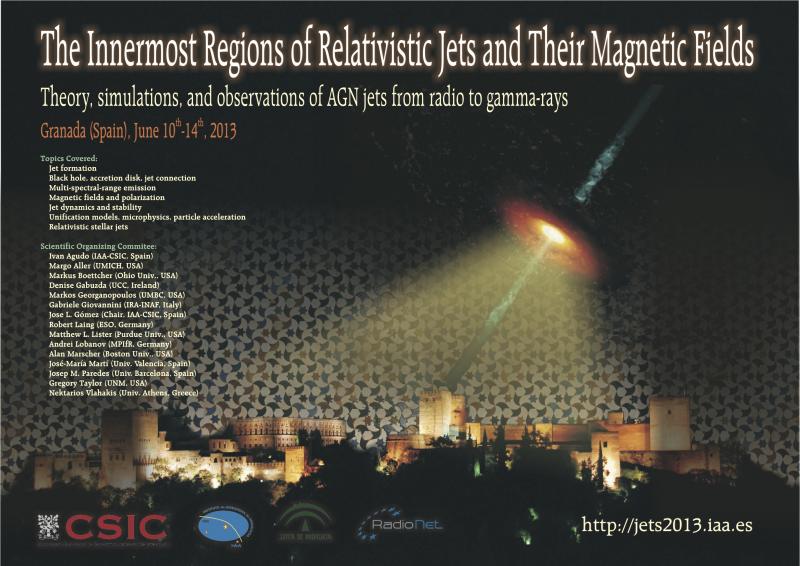The Innermost Regions of Relativistic Jets and Their Magnetic Fields. Granada (Spain). June 10th-14th, 2013.
Balokovic, Mislav
NuSTAR Observations of Blazar Mkn 421 in the 2013 Multi-wavelength Campaign.
Author list: Mislav Balokovic, Marco Ajello, Roger Blandford, Steven Boggs, Kristen Boydstun, Finn Christensen, William Craig, Amy Furniss, Paolo Giommi, Charles Hailey, Fiona Harrison, Masaaki Hayashida, Brian Humensky, Yoshiyuki Inoue, Jason Koglin, Gregorz Madejski, David Meier, Thomas Nelson, Patrick Ogle, David Paneque, Matteo Perri, Simonetta Puccetti, Anthony Readhead, Daniel Stern, Gianpiero Tagliaferri, Megan Urry, Ann Wehrle, William Zhang
NuSTAR is the first X-ray telescope in orbit capable of focusing in the hard X-ray band up to 79 keV, enabling it to reach a factor of 100 better sensitivity above 10 keV in comparison to previous missions. We present NuSTAR observations of the famous blazar Mkn 421. Since January 2013, it has been a subject of a 5-month multi-wavelength campaign consisting of 2 to 4 pointings per month, strictly simultaneous with observations with the Veritas and MAGIC TeV telescopes. The aim of the campaign is unprecedented multi-wavelength coverage of the spectral energy distribution (SED) in different states and the characterization of any correlated variability. Mkn 421 was clearly detected up to highest NuSTAR energies with a spectrum that is a gradually steepening power law, with no evidence for the onset of a Compton SED component in the NuSTAR band. Significant variability spanning more than an order of magnitude in flux was seen during the campaign, and flux changes by a factor of 3 have been observed within a single 12-hour observation. The flux variability was correlated with spectral variations around the synchrotron peak of the SED, which are very well sampled by combining simultaneous NuSTAR and Swift data. The observed softer-when-fainter behavior is consistent with previous soft X-ray observations in same flux range. The unprecedented data quality and the extension of high sensitivity above 10 keV allow for a detailed study of the distribution of radiating particles in the relativistic jet in the context of standard leptonic models.




